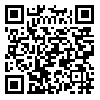Background and purpose: Inappropriate complementary feeding practices are one of the causes of malnutrition worldwide. This study was aimed to determine the complementary feeding practices according to World Health Organization recommendation in Sari, Iran. Materials and Methods: This cross-sectional study on complementary feeding practices assayed the different aspect of infant feeding based on maternal, childbirth, and infant characteristics. This study was conducted during the period between March and June 2013 on 401 mothers of infants under 1 year of age attending primary health centers using Poisson random sampling method and semi-structured questionnaire. A chi-square test was used to analyze the data. Results: Almost 83.6% of mothers started complementary feeding at recommended age of 6 months. The most common starting food was Fereni (51.5%). About half of mothers fed their infants complementary food of appropriate consistency (49%) with recommended frequency (54.6%). Fathers’ educational level was found to be the significant associated factor with appropriate complementary feeding practices (P = 0.02). Conclusion: Complementary feeding practices by mothers in the capital city of Mazandaran province are still inappropriate in term of consistency, frequency and type of food introduced. Emphasis should be given to educating mothers and fathers about this important issue.
| بازنشر اطلاعات | |
 |
این مقاله تحت شرایط Creative Commons Attribution-NonCommercial 4.0 International License قابل بازنشر است. |

